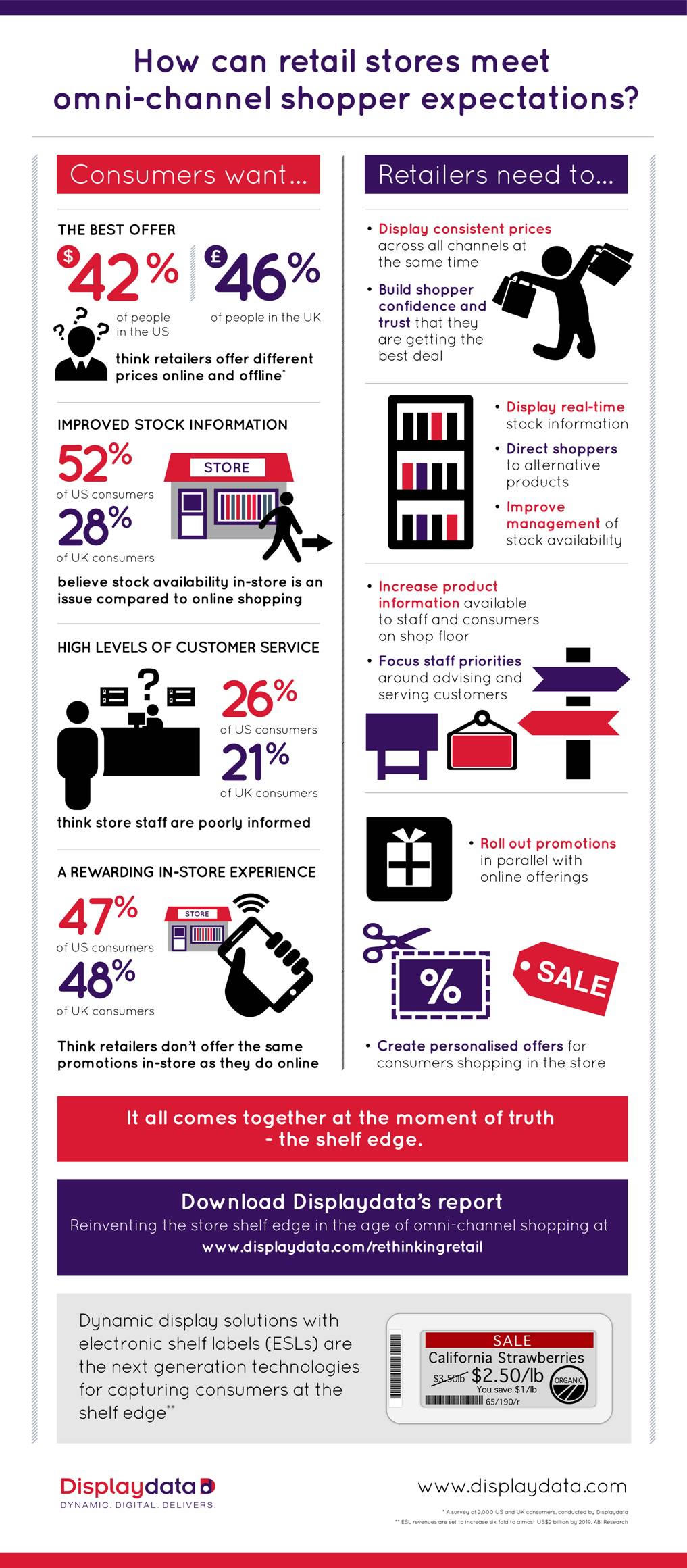
Online and In-store Pricing: Maintaining Customer Trust
As a brick-and-mortar retailer, you work hard to create a seamless omni-channel shopping experience. But pretend for a moment you’re a customer at one of your stores looking for a particular item. Consider these scenarios:
- When you find the product you want to purchase, do you check the website to see if it’s cheaper?
- If a product is out-of-stock in a store, do you check to see if it’s available online?
- When you have a question about a product, do you look on the website to see if you can find the answer or more information?
What happens when there’s a significant discrepancy between your online and in-store experience? Your customer begins to form a negative opinion of your brand and company. Just look at these statistics from DisplayData regarding omni-channel shopper expectations.
- 42% of customers think retailers offer different prices online
- 52% of customers believe product availability in-store is problematic in comparison to online availability
- 26% of customers think retail staff are poorly informed
- 47% of customers don’t think retailers offer the same promotions in-store as they do online
- 72% of U.S. shoppers leave the store without their intended purchases because they perceive the in-store price is too high
Omni-channel Transparency
Offering consistent pricing across all touch points will win (back) customer sales and loyalty. While online and in-store differences can’t all be eliminated, here are four pricing strategy tips to help maintain omni-channel transparency.
- Make sure prices are consistent across all channels and are updated at the same time. Whether you use regional or local pricing, when possible choose the lowest in-store price for the same item on your website.
- Display stock information in real-time (or as near to real-time as possible). Use a local log-in page for stores to link inventories between a physical location and online. Home Depot redesigned their mobile site adding new functionalities employing geo-location. Users can share their location, giving them access to current inventory, pricing, and aisle-location for merchandise in a particular store.
- Provide retail staff internet access through computers or tablets so they can better answer questions from customers. Best Buy associates can check pricing and availability at local retailers and major online competitors. They’ll also check BestBuy.com and are empowered to match prices.
- Roll-out promotional campaigns both in-store and online at the same time. One general rule is never to undercut in-store pricing since the purpose of the promotion is to drive traffic to the physical location.
Transparency and Trust
While many retailers allocate more time, money and resources to their online storefronts, it’s important to make sure your eCommerce site stays in-sync with brick-and-mortar stores (and vice-versa). Increase the transparency between the two – and increase trust with your customers.
